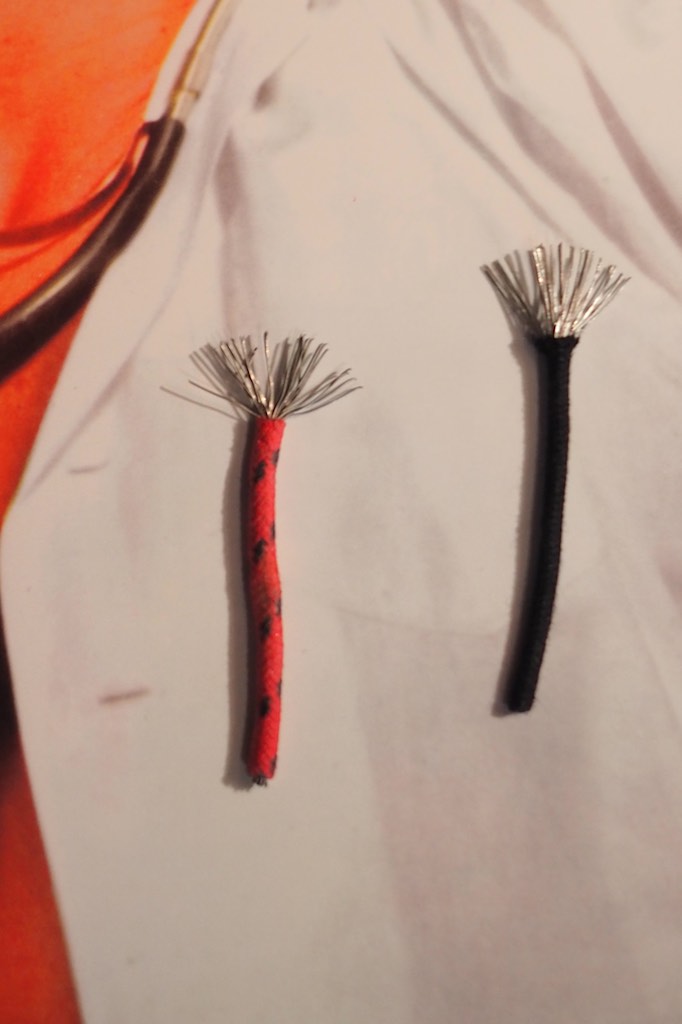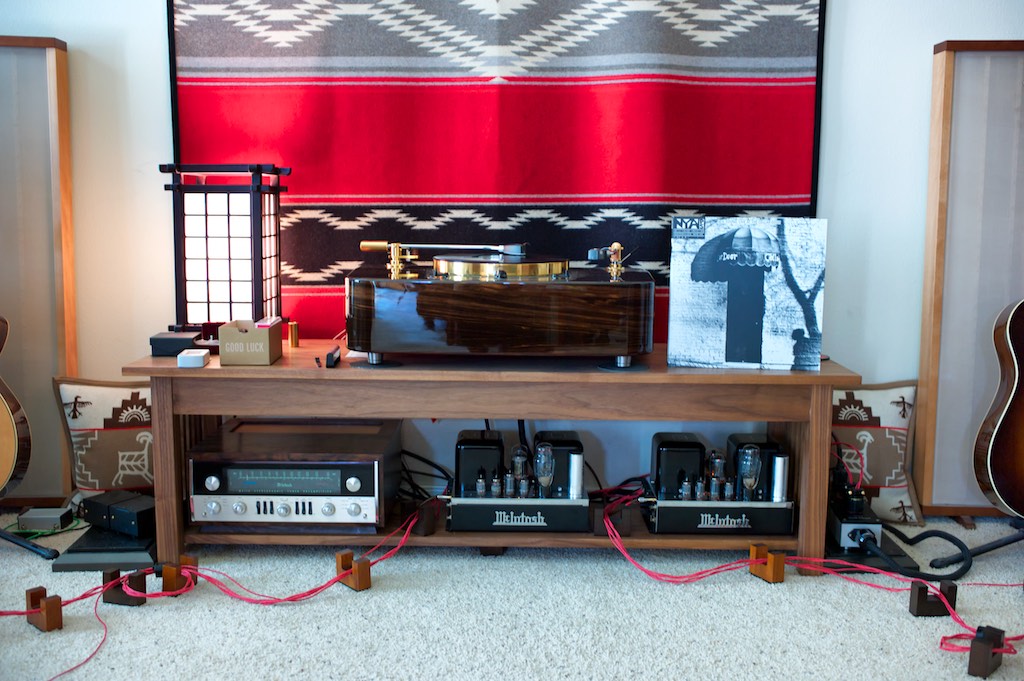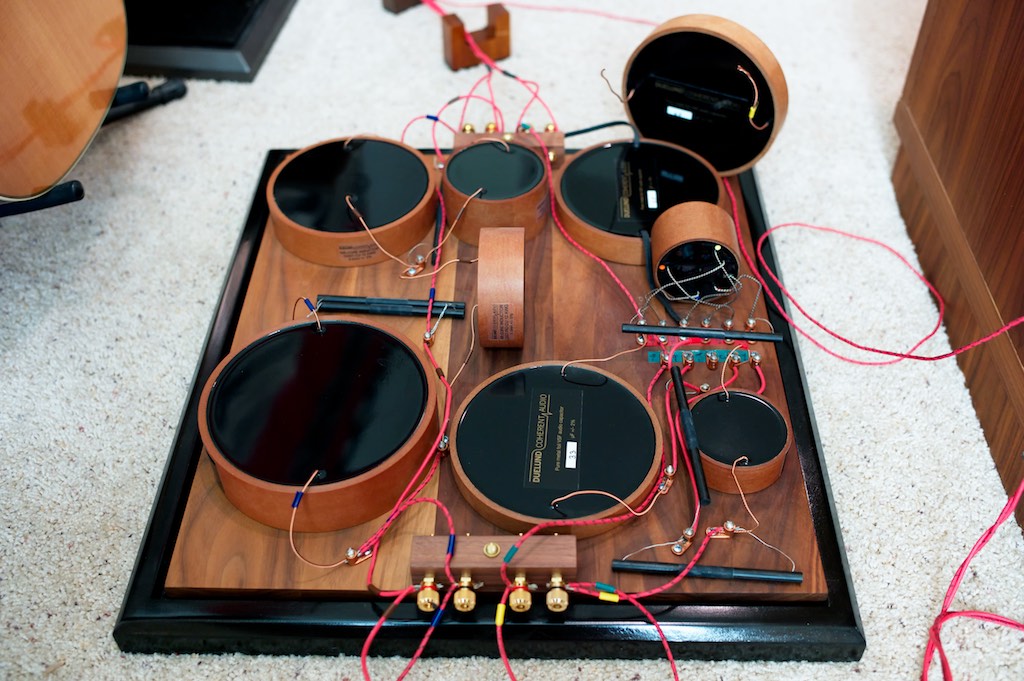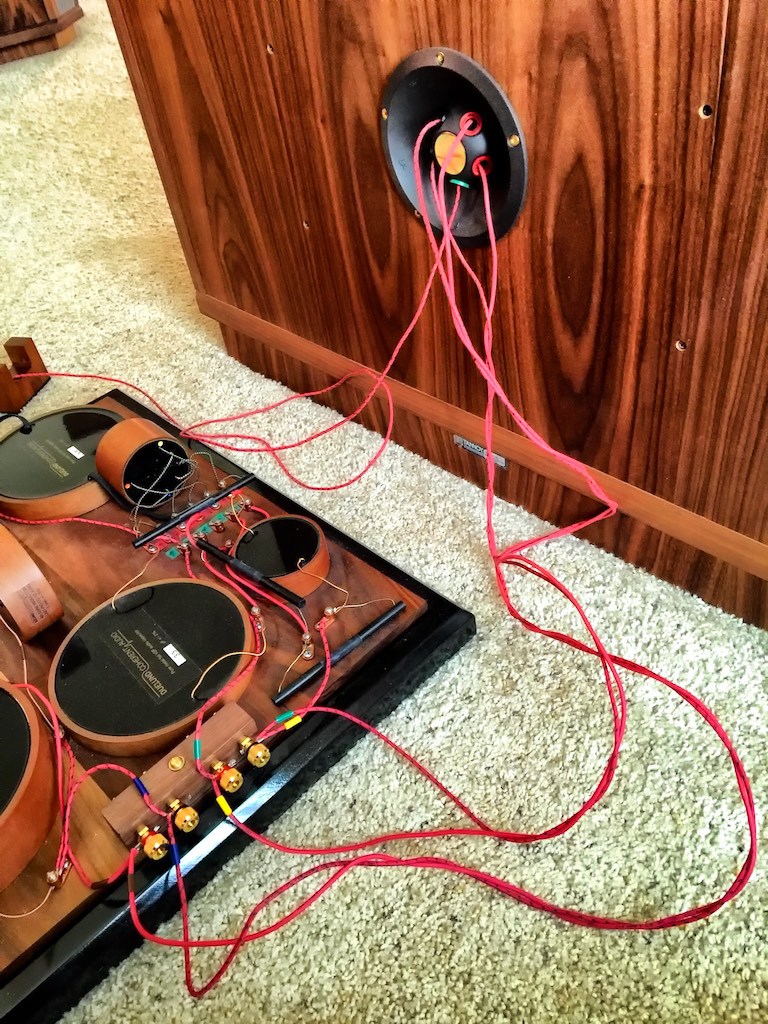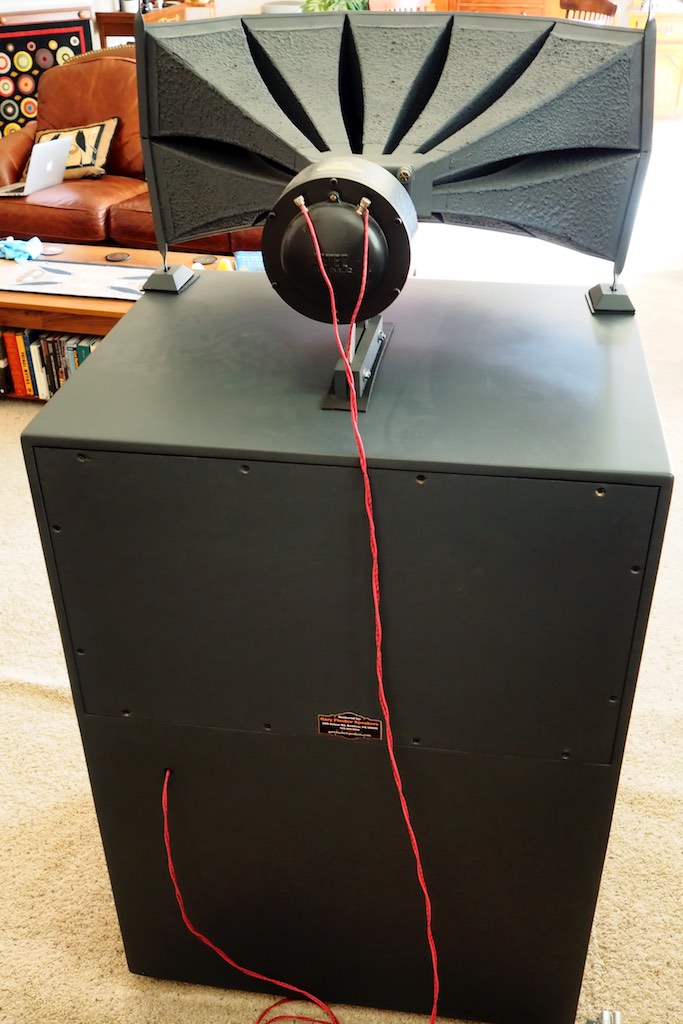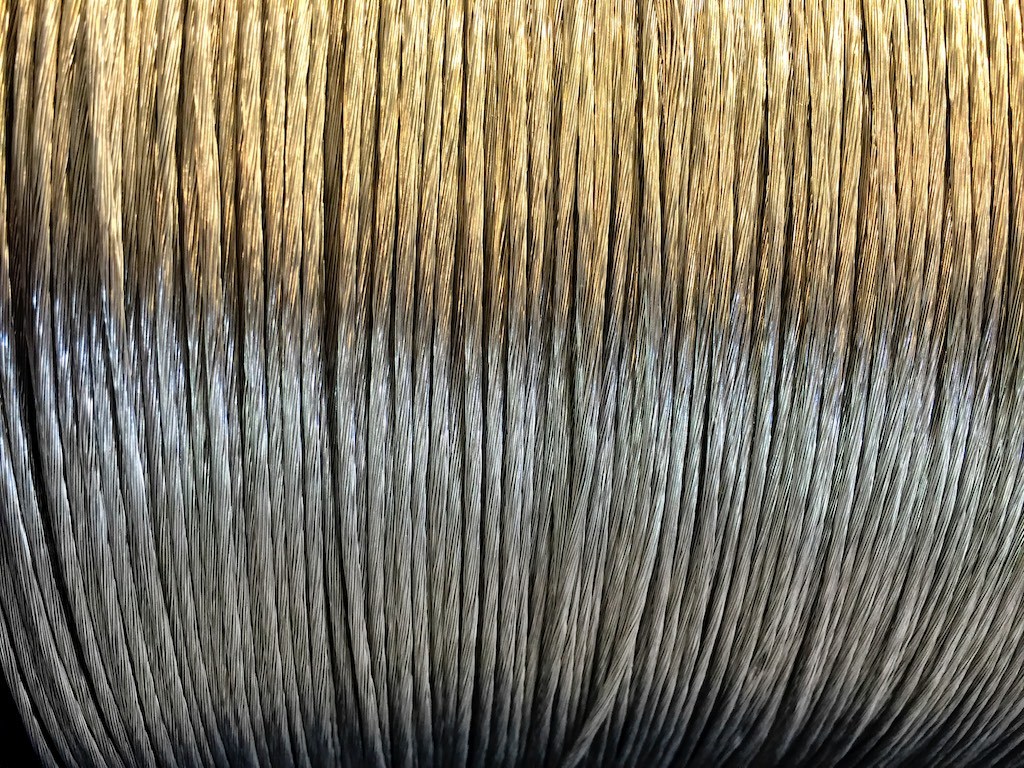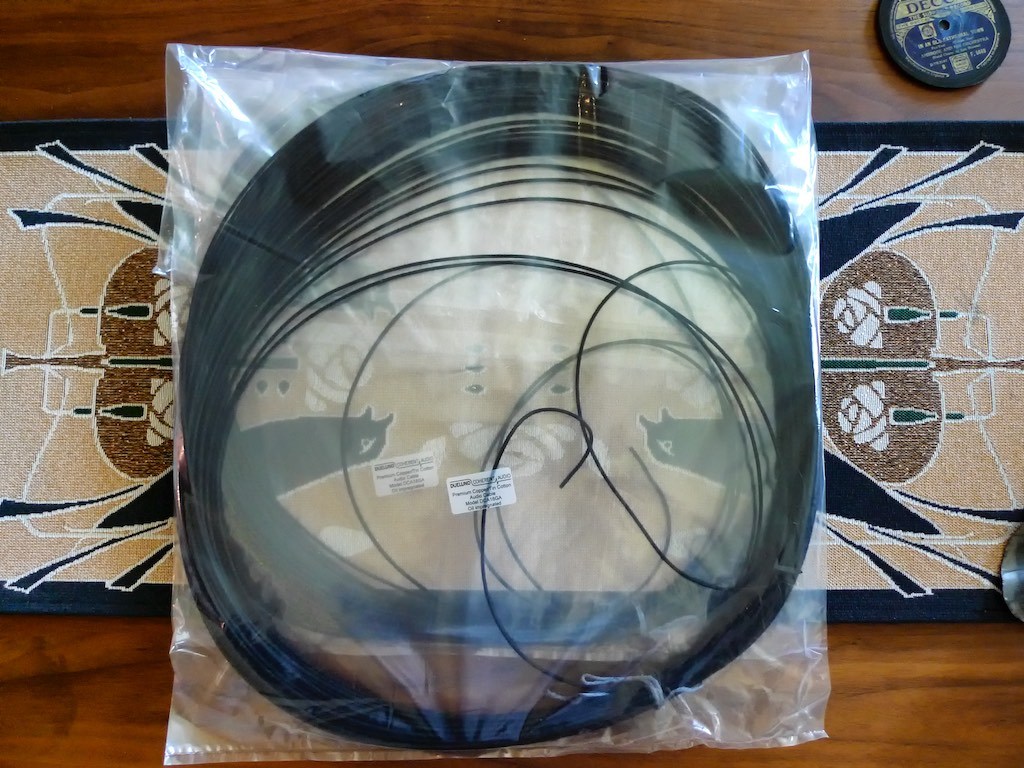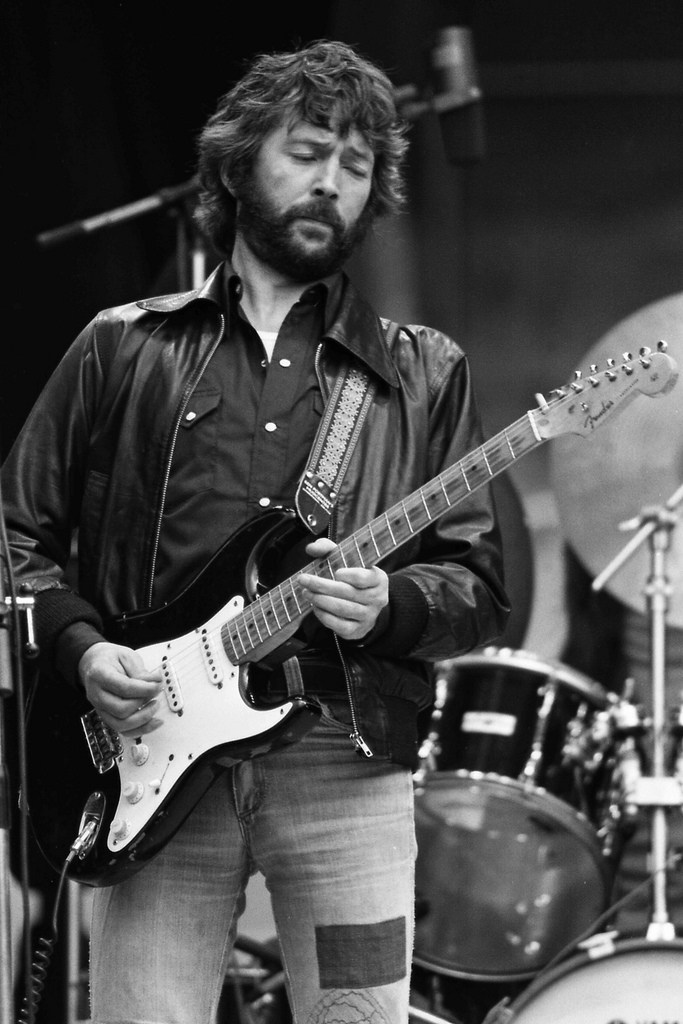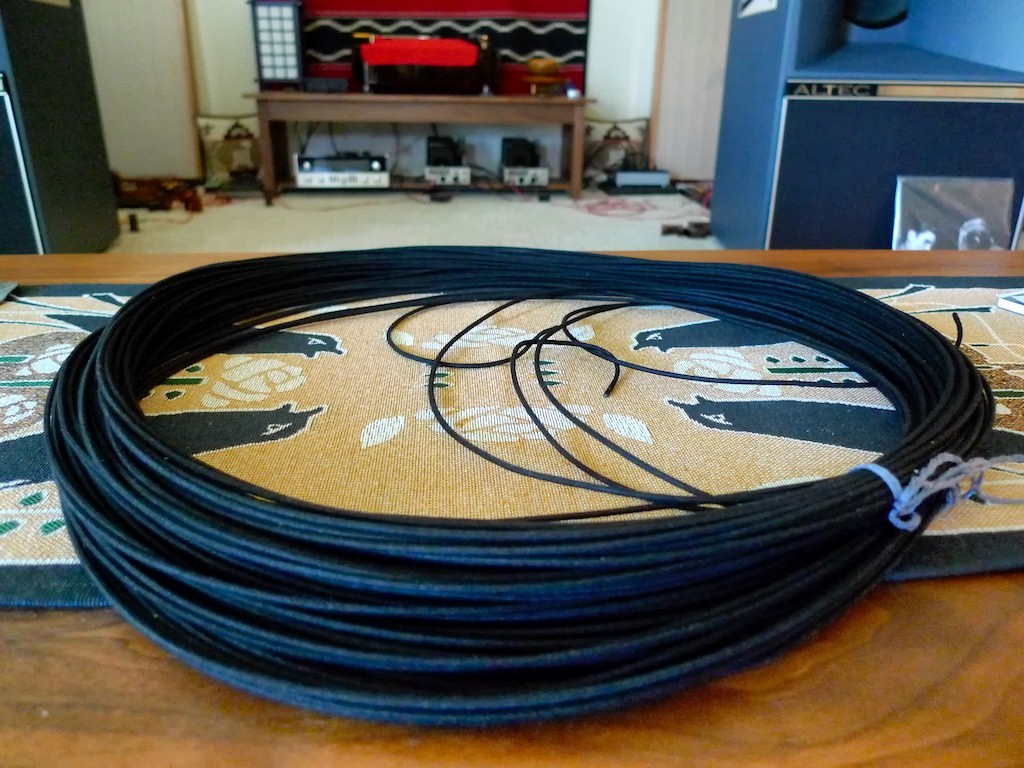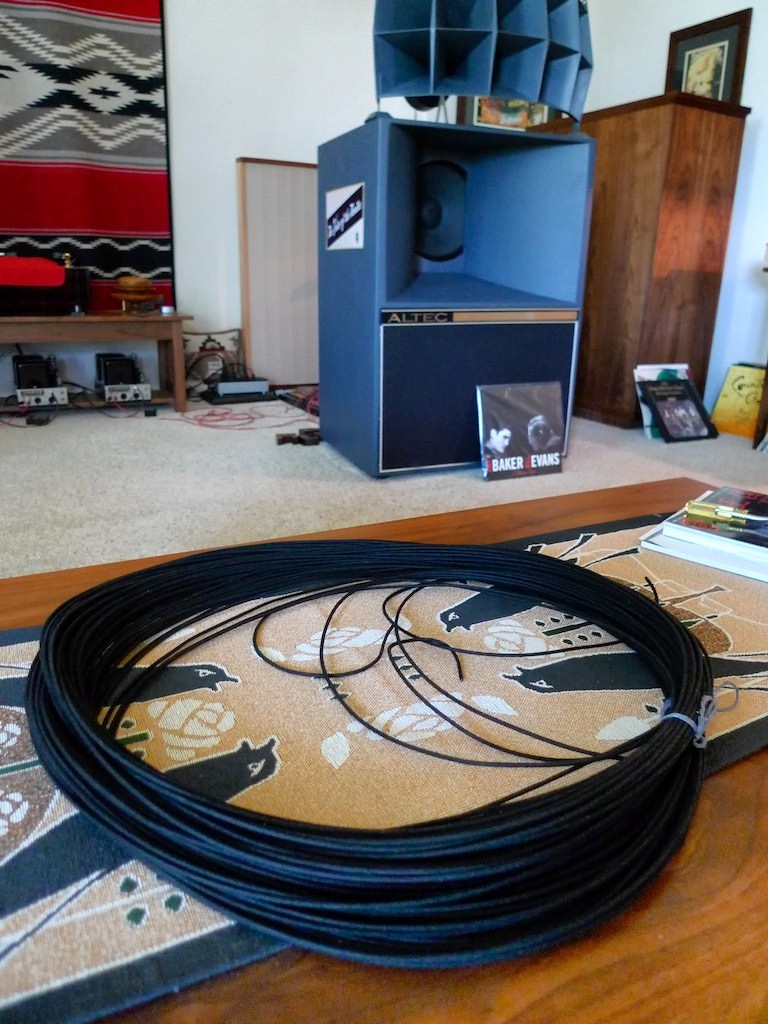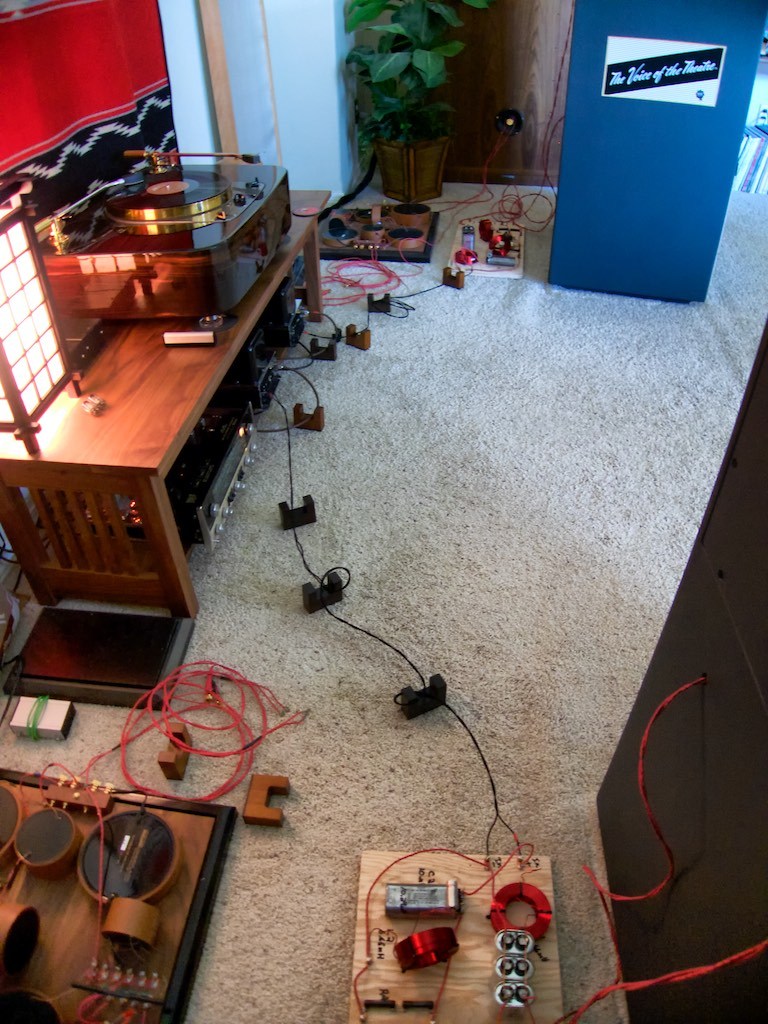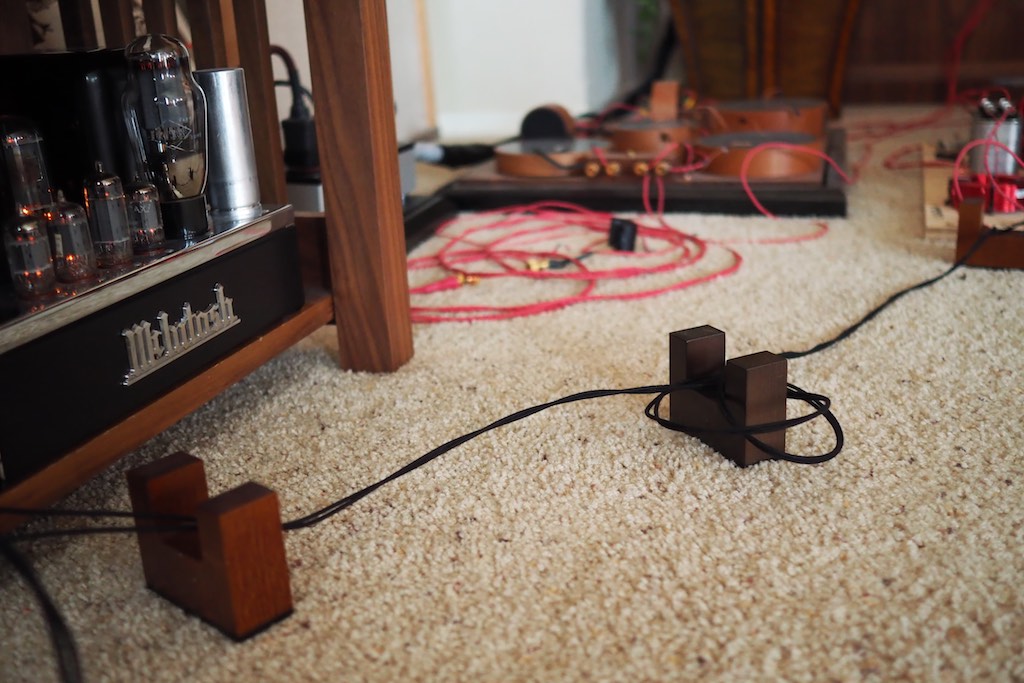I'm hard at work this weekend, working on finishing writing the review for Positive Feedback of the Duelund Coherent Audio DCA16GA Premium Tinned-Copper ‘Vintage Tone’ Cable that will be appearing in the November-December issue, but I thought you would enjoy a little 'sneak peek', so here you go! Enjoy!
The Duelund Coherent Audio DCA16GA Premium Tinned-Copper ‘Vintage Tone’ Cable
By Jeff Day
Frederik Carøe in Denmark knocked me out with his amazing Duelund Coherent Audio CAST capacitors, inductors, resistors, and autoformers that I wrote about in Issue 70 and Issue 74 of Positive Feedback, and now he has done it once again with his superb Duelund Coherent Audio DCA16GA premium tinned-copper ‘vintage tone’ cable, which I have had fantastic results with as both speaker cables and as RCA interconnects.
Frederik worked closely with a specialty manufacturer to develop the 26-strand, 0.25mm diameter, tinned-copper conductors used in the Duelund Coherent Audio DCA16GA wire. Then following Mr. Steen Duelund’s axiom that natural materials produce more natural tone, he clothed the DCA16GA conductors in an oil impregnated black cotton dielectric.
Frederik says the oil impregnated cotton dielectric is baked “so people won’t get a messy cable” and that “its main role is to make the dielectric anti-static, and the cotton more durable.”
Like all Duelund products the DCA16GA wire is hand-assembled with meticulous care and attention to details.
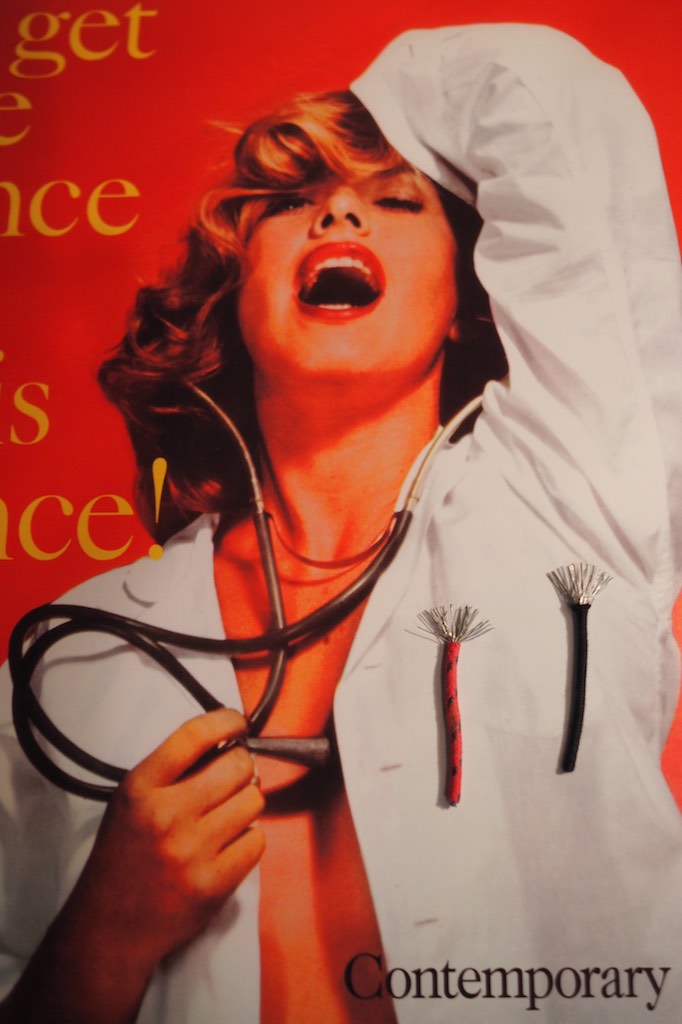
Duelund DCA16GA wire on the right (black), and Western Electric WE16GA on the left (red). Background courtesy of my You get more bounce with Curtis Counce jazz album, which depicts quite well what it's like to listen to the Duelund DCA16GA.
There’s quite a good story associated with the arrival of the Duelund Coherent Audio DCA16GA tinned-copper wire that deserves telling, and the vintage Western Electric WE16GA wire that inspired its production (right & left in the photo above, respectively, and in the close-up photo below).
Over a year ago now, the delightful Yazaki-san of SPEC Corporation introduced me to the wonders of vintage Western Electric WE16GA tinned-copper wire in the ‘Adventures in Real Sound with Mr. Shirokazu Yazaki’ article that I wrote about in Positive Feedback Issue 81.
The ‘real sound’ of that Western Electric WE16GA tinned-copper wire swept me off my feet and I quickly became addicted to its vivid tonal wonders, using it first for speaker cables with my Tannoy Westminster Royal SE loudspeakers, then I rewired my Duelund Coherent Audio CAST crossovers with the WE16GA, and finally I rewired my Westminster’s internally with the WE16GA tinned-copper wire. Yes, I really, really, liked what it did for my Westminster Royal SE loudspeakers.
The Western Electric WE16GA as a vintage wire is no longer in production, and the real thing has gotten difficult to come by as word got out about its incredibly musical performance.
‘Forgeries’ of the WE16GA actually started to appear from disreputable eBay sellers trying to capitalize on the WE16GA’s burgeoning popularity, which caused me great dismay, given I was the one who popularized it by writing about it here at Positive Feedback and at my blog, Jeff’s Place.
I enjoyed its tonal properties so much that I was starting to get a little bit panicky about running out of the vintage Western Electric WE16GA tinned-copper wire, as not only had I done a complete rewire of my Westminster-Duelund loudspeaker system with it, but I had made speaker cables of it for my vintage ‘Stokowski’ Altec A7 Voice of the Theatre loudspeakers, and I also wanted to use it for wiring up my vintage Altec-Lansing A5 Voice of the Theatre loudspeaker system project, and to make a set of speaker cables for my Harbeth Super HL5 loudspeakers.
I had big plans, but it wasn’t looking good for yours truly, as I was running out of WE16GA, and I had a lot more that I wanted to use it for!
During my year-long public affair with the vintage Western Electric WE16GA, Frederik had been quietly observing the audio community’s reaction to its considerable tonal charms, their (and my) dismay at having it become extinct, and he became intrigued with the idea of producing a contemporary Duelund Coherent Audio version of the Western Electric WE16GA, but going the Western Electric one better by utilizing Mr. Steen Duelund’s axiom of a natural materials philosophy.
Frederik told me about his idea for a Duelund version of the WE16GA, and you can imagine how excited I was about this development, as well as encouraged by the potential of being rescued from the brink of oblivion of running out of the WE16GA for my planned audio projects.
I had already dissected the Western Electric WE16GA at my blog for my readers, describing its 26-strand tinned-copper conductors, its plastic inner sleeve, and red & black fabric outer covering.
Frederik asked me if I would get out my micrometer and measure the diameter of the individual strands that make up the Western Electric WE16GA, which I did, and each strand was 0.25mm in diameter. The conductor of the Western Electric WE16GA was composed of twenty-six strands of 0.25mm tinned-copper wire.
Armed with that information, Frederik then worked closely with a specialty wire manufacturer to develop the 26-strand, 0.25mm diameter, tinned-copper conductors that are the heart & soul of the Western Electric wire, and then commissioned a first production run for use in his newly imagined Duelund Coherent Audio DCA16GA wire.
After Frederik received his first production run of the conductors for the new Duelund DCA16GA premium tinned-copper cable, he set about wrapping it with his chosen dielectric.
Frederik eschewed the inner plastic insulator and outer fabric covering of the Western Electric in favor of a black cotton dielectric that is impregnated in oil and then baked, in keeping with the Duelund philosophy of using natural materials, which Frederik thought would imbue an even more natural and desirable tone to the new Duelund DCA16GA cable than the use of plastics in the vintage WE16GA could allow for.
I’ll tell you what, there’s been nothing that was more highly anticipated by the readers of my blog (and me) than the Duelund Coherent Audio DCA16GA premium tinned-copper ‘vintage tone’ cable, with the promise that it could very well become the heir apparent to the now extinct vintage Western Electric WE16GA cable that we all loved so much.
Every time I mentioned the DCA16GA at my blog, the hit counter showed dramatic spikes, and the anticipation for me awaiting its arrival was back like when I was a kid, waiting for Christmas morning to arrive, and for my readers as well, I think.
Then that fateful day came when the new Duelund Coherent Audio DCA16GA premium tinned-copper ‘vintage tone’ cable arrived from Frederik for me to evaluate.
Would it sound as good as the Western Electric WE16GA, or possibly even better? What if it sounded much worse?
I imagine Frederik was anxiously awaiting the results of my first evaluations of his new DCA16GA cable, just as I and my readers were, as he had invested significantly in its production.
Why tinned-copper wire?
I’ll get to the evaluations of the new Duelund Coherent Audio DCA16GA premium tinned-copper cable lickety-split, but before I do I want to answer the question that most of you are thinking, which is “Why use tinned-copper wire as a conductor?”
Back in 1950’s America, tinned-copper wire, like the Western Electric WE16GA I’ve mentioned here, was routinely used in industrial applications, because electroplating copper wires with tin prevented corrosion and improved strippability, which made for an altogether more durable & reliable wire for industrial use.
Corrosion was an issue back in the 1950’s because the common insulators of the day released sulfur peroxide over time, which would then react with the copper conductors to form copper sulfide, which degraded the wires’ performance. However, if you tinned the copper wire, the sulfur peroxide released from the insulators couldn’t degrade the copper by forming copper sulfide, thus protecting the performance characteristics of the cables.
For the shielded cables of the 1950’s, the composition of the shielding made it difficult to strip from bare copper conductors, so tinned-copper conductors were used, as they were easier to field-strip in preparation for use.
So the origin of tinned-copper wire was related to the purely practical reasons of preventing corrosion and easing strippability, making the wire more durable, reliable, and easy to handle in industrial applications.
Over time, new wire insulators were developed that didn’t corrode bare copper conductors, and new shielding materials were developed that made strippability over bare copper conductors a breeze.
Those new materials for insulators & shielding meant the tinned-copper conductors that were so expensive to manufacture began to fade from the scene, with the forces of penny-pinching capitalism covering them in the sands of time, and largely erasing them from people’s memories.
What is ‘vintage tone’?
For audio use, most of you are probably familiar with contemporary speaker cables & interconnects that are made with copper, silver, or even gold wire, and are aware that each of those conductors have their own unique sonic signatures.
I’m guessing most of you probably haven’t had much exposure to tinned-copper wire, unless of course you happen to have a hobby that involves restoring or hot-rodding vintage audio gear, which tends to be chock-full of tinned-copper hookup wire. The same is also true for vintage electric guitars, and vintage guitar amplifiers, which used tinned-copper wire in their manufacturing.
My vintage McIntosh electronics, for example, are wired internally with the industrial wire standard of their day, Western Electric tinned-copper wire. It is unlikely that McIntosh’s choice of tinned-copper wire for use in their vintage electronics was related to the sound quality of the wire, in the way we think about it today, but more likely for its industrial qualities of being corrosion resistant and easily strippable during the manufacturing process.
Now it stands to reason that if copper, silver, and gold wire has a signature sound when used in speaker cables & interconnects, then tinned-copper wire probably has its own signature sound as well.
But it actually wasn’t the vintage audio guys that first realized that there was something very special about the musical tonality of tinned-copper conductors, it was the vintage electric guitar guys, and they referred to the tinned-copper wire used in vintage electric guitars, and vintage electric guitar amplifiers, as ‘vintage tone’ wire, because of its very musically expressive tonality.
As a result of this realization, an entire cottage industry sprang up among the electric guitar guys for modifying modern production electric guitars & electric guitar amplifiers in an effort to recapture the ‘vintage tone’ of those fantastically musical vintage electric guitars and their amplifiers, like Eric Clapton’s Fender Stratocaster ‘Blackie’, for example.
Even electronic guitar manufacturers have recognized this trend and have gotten on board in recapturing their historic ‘vintage tone’ with ‘vintage tone wire’, ‘vintage tone caps’ (a story for another time), and ‘vintage tonewoods’. If you’re interested in reading more about the ‘vintage tone’ phenomena, you can read a lot more about it on my blog, just search on ‘vintage tone’ and have fun reading!
However, this ‘vintage tone’ trend went largely unnoticed in audio circles until recently, when in an entirely parallel audio universe, Shirokazu Yazaki, or Yazaki-san, as the readers of my blog know him as, rediscovered the lost artistry of tone that tinned-copper conductors so easily provide for audio use.
It was Yazaki-san who introduced me to the ‘vintage tone’ of the tinned-copper Western Electric WE16GA wire for speaker cables, and the shielded tinned-copper conductors of Belden 8402 microphone cable for interconnects (more about this in a moment), and frankly, it changed the way I think about audio, and audio cabling in particular. Yazaki-san refers to these tonal qualities as ‘real sound’, and I would agree.
When I say ‘vintage tone’ wire to an audio enthusiast it usually conjures up an image of a warm, mid-range centric, modestly resolving, pleasantly musical wire, that is really nothing special.
When I say ‘vintage tone’ wire to an electric guitar guy it conjures up an image of a wire that has extremely vivid tone color, superb dynamic response, can start & stop on a dime during melodic improvisation, allows notes to decay beautifully, has an irrepressible musical expressivity & tonal beauty that is not easy to quantify, as there’s just something special about the way you can play music when your gear's wired up with it.
When I say ‘vintage tone’ wire, what I’m talking about is much closer to what the vintage electric guitar guys think about tinned-copper wire, but there are other aspects to ‘vintage tone’ in audio terms that I’m looking forward to introducing you to as well, so please, read on.
Duelund Coherent Audio DCA16GA Speaker Cables for My Vintage Altec A5 Voice of the Theatre Loudspeakers
When the DCA16GA arrived from Frederik, I quickly unpackaged it and got busy making up a set of speaker cables for my vintage Altec-Lansing A5 Voice of the Theatre loudspeaker project so I could give them a listen.
Out came the Western Electric WE16GA and in went the Duelund Coherent Audio DCA16GA.
I attached the bare wire ends of the DCA16GA to my vintage McIntosh MC30 monaural amplifiers on one end, and my breadboard crossovers for the Altec A5 VOTTs on the other end.
One thing that experience has taught me over the last year about tinned-copper conductor cables like those in the WE16GA, is that they can sound brash and forward until they get adequate run-in time in a system (about 100 hours) or on a Cable Cooker™ (about 4 days).
Hint: I’ve found Alan Kafton’s audiodharma Cable Cooker™ indispensable in speeding up run-in time, and for getting the most out of my cables, whatever kind they are, and as a bonus it costs less than a pair of hoity-toity interconnects.
I was steeling myself for my first listen to the Duelund DCA16GA, and was telling myself that even the Western Electric WE16GA sounded a little rough until it settled down, and then it unfolded over time to reveal a remarkably musical presentation that brings the music to life.
However, when I put the Duelund DCA16GA into the system as speaker cables, with no conditioning at all, they didn’t sound brash & forward like the Western Electric WE16GA did with no time on it.
What did I hear? Well, compared to the Western Electric WE16GA, I heard all of the considerable goodness of well run-in WE16GA, but the Duelund DCA16GA had an overall richer presentation, it sounded smoother, more spacious, had more intense tone color, it was more transparent (and at the same time more natural sounding!), with images that had more presence, as well as a superb portrayal of tempos, melodies, rhythm, and dynamics. Those are all attributes that push my buttons, so I was very excited about what I was hearing.
Essentially, I heard everything that I really like about the Western Electric WE16GA, but everything was better with the Duelund DCA16GA. Everything, both musically & sonically. That's a "Wow!"
***
Ok, that's it for the sneak peak, and with a little luck I'll get the full article done in time for it to appear in the Positive Feedback November-December issue. Wish me luck!
Thanks for stopping by, and may the tone be with you!





